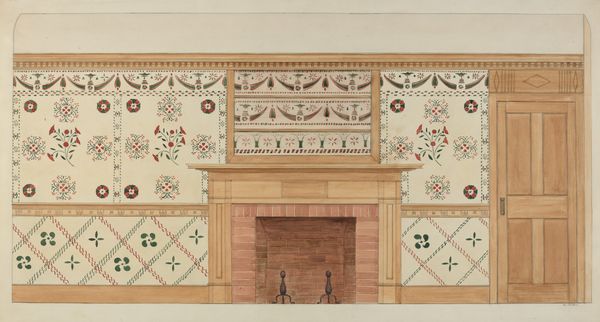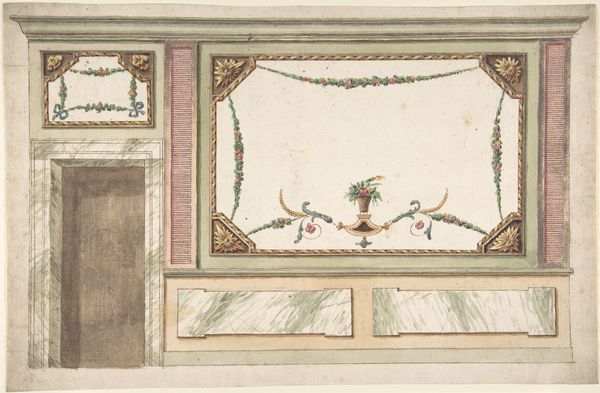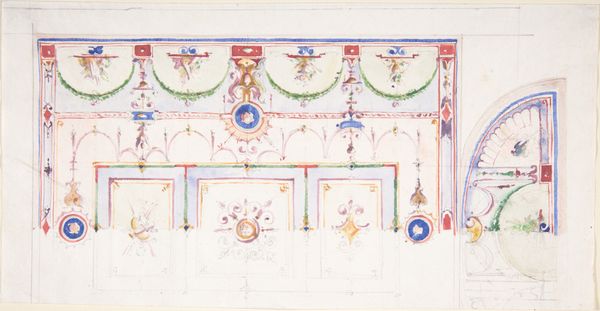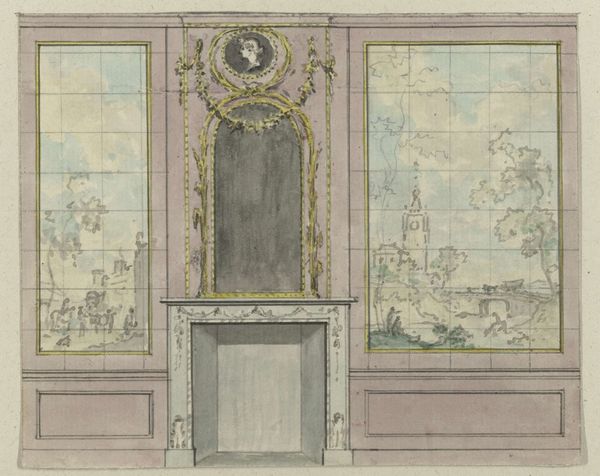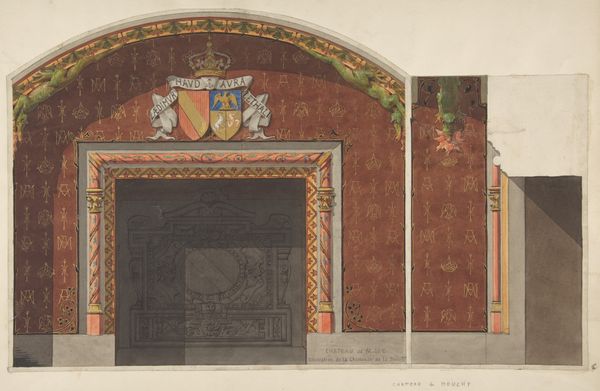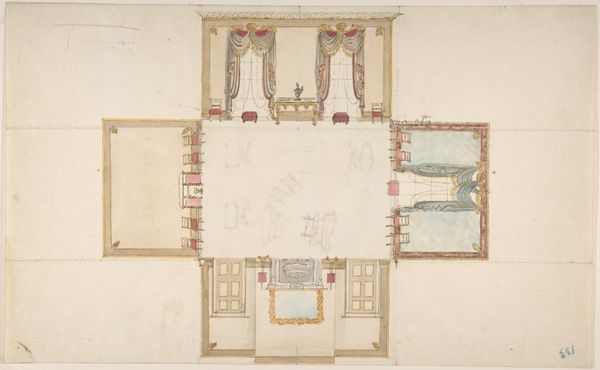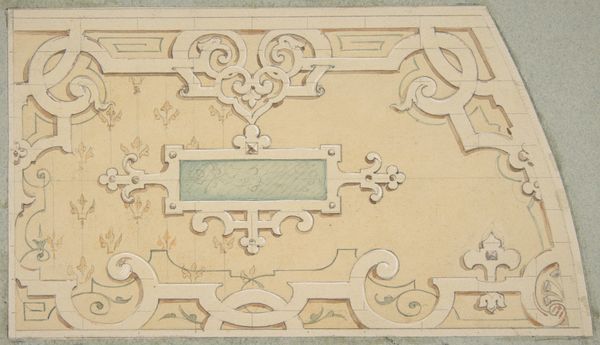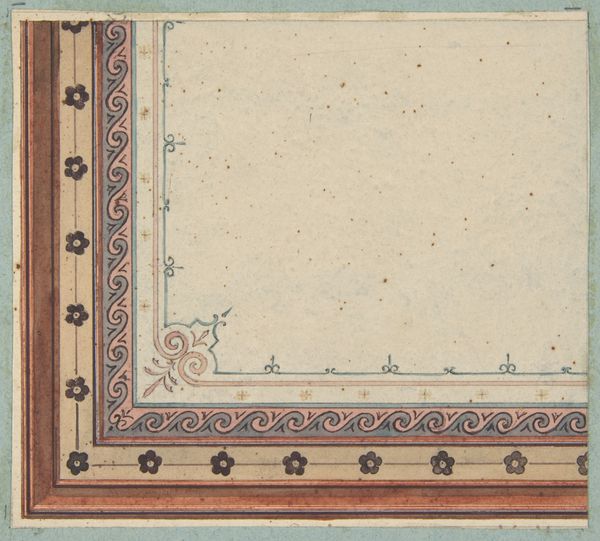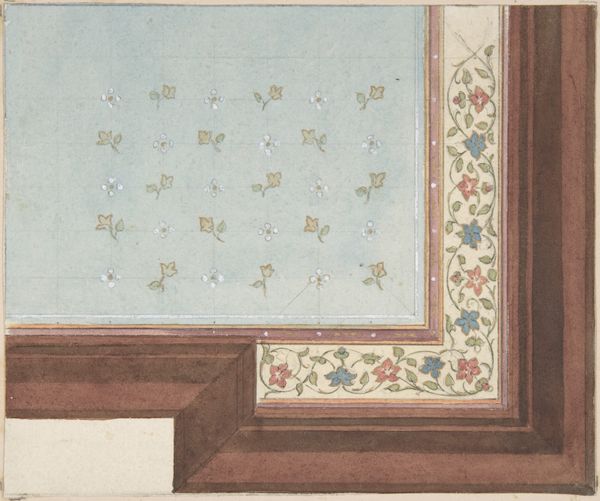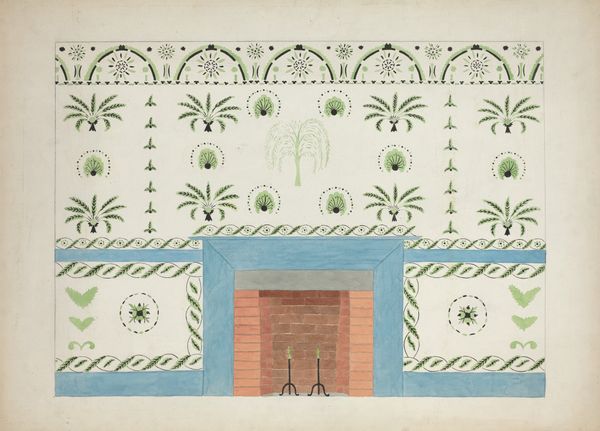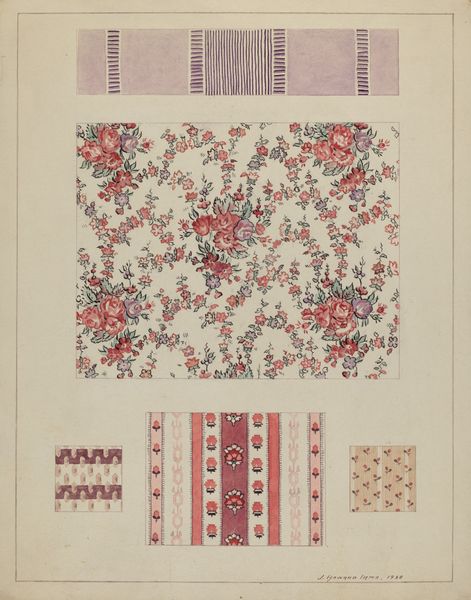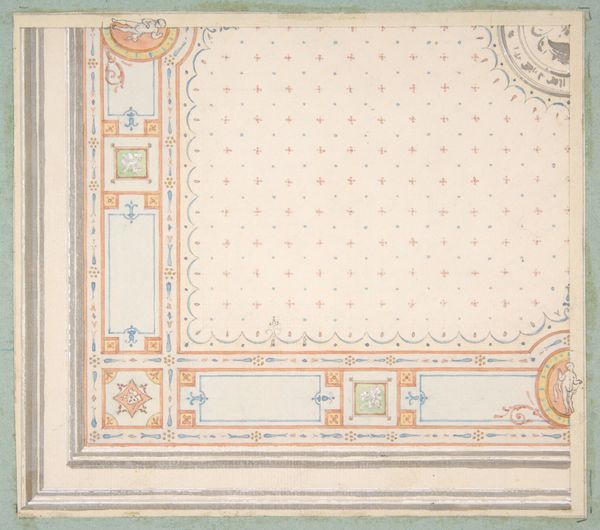
drawing, tempera, paper, pencil
#
drawing
#
tempera
#
paper
#
folk-art
#
pencil
#
decorative-art
Dimensions: overall: 55.9 x 72.6 cm (22 x 28 9/16 in.)
Copyright: National Gallery of Art: CC0 1.0
Editor: Here we have Ray Holden’s “Stencilled Wall,” a drawing and tempera piece on paper from around 1936. It's a really interesting, almost quaint, depiction of a room interior, and the flatness gives it a very decorative quality. What strikes you when you look at this work? Curator: What immediately grabs my attention is how this seemingly simple domestic scene speaks volumes about gender and labor in the 1930s. This folk-art style suggests a connection to traditionally feminine crafts. Do you see the way the stenciling, although attributed to an individual artist, evokes a sense of communal artistry, something passed down through generations of women? Editor: I hadn’t considered the gendered aspect, but now that you mention it, I can see it. It feels connected to domestic spaces and crafts often associated with women. But how does that link to activism? Curator: Think about the politics inherent in claiming the domestic sphere as a site of creativity and resistance. By elevating a "folk art" style often marginalized as simply "decorative," Holden subtly challenges the hierarchy that places "high art" above traditionally female-associated practices. Doesn't it remind you of the feminist art movements that emerged later in the 20th century, reclaiming crafts and domesticity as powerful artistic statements? Editor: That makes a lot of sense. I was so focused on the aesthetics that I missed the potential commentary on gender roles and artistic value. Curator: Exactly. And that tension between the domestic and the decorative – is there a potential commentary on the limited spaces available to women at that time, both literally and figuratively? Editor: I see what you mean. So, by exploring what appears to be just a “Stencilled Wall,” we’re really unpacking ideas about gender, craft, and value. Curator: Precisely. And isn't that the power of art – to provoke these questions and challenge our perceptions?
Comments
No comments
Be the first to comment and join the conversation on the ultimate creative platform.
